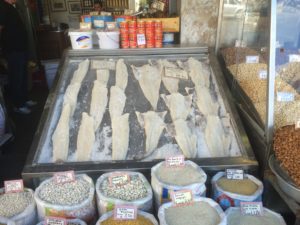Post – 7.11.2010, updated 10.1.2018 |
Quality is about preserving the freshness and taste of seafood. Freshness can be preserved in various ways. To store it live is the simplest and best way as can be experienced in e.g Japan and China. Chilled or on ice fresh is the next method gaining in popularity. Freezing is one of the best ways to preserve quality but this methods was invented by Clarence Birdseye in the USA around 1922. There are today on offer three qualities of frozen seafood: Frozen at sea, frozen on land and twice frozen products. Salting has been popular for cod, known as bacalao and other fish, and dates back 500 years and today you can also get light salted or brined, frozen, fillets. Dried seafood is an old method to preserve fish, a simple and important way to store seafood and you only need a dry place to store it. Canning is an old method, invented by Nicolas Appert in 1810 for the French army to secure supplies of quality food to the battle fields. Canning is still important for supplies of tuna, salmon, herring, sardines and other mainly fat seafood. Smoking is maybe the oldest method of storing fish, it has mainly been for fat fish like salmon, eel, herring and mackerel and today it is still a very important market segment. Of growing popularity has become chilled products, these are usually previously frozen fillets, portions or prepared products, which have been defrosted and stored chilled in the shop in MAP or Skin packed trays or on ice in the fresh fish counter. Other preservation methods include marinating and storing in brine, such as shrimps or herring. Freeze drying is a very technical process, developed during the second world war and today mainly used to process seafood and prepare for mixing with other ingredients for e.g. soups and animal food. New methods are being developed, such as food irradiation which dates back to the discovering of Roentgen, but has not managed to get much popularity. Source: Various, such and Wikipedia.

